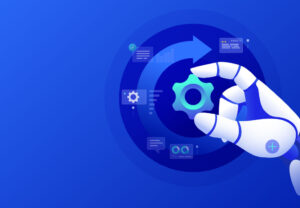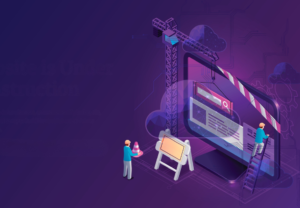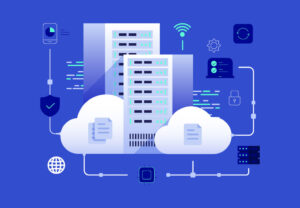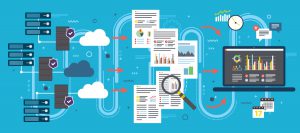From Lab to Patient: Accelerating Life Sciences Value Chains with Advanced AI
“AI in life sciences is transitioning from experimental pilots to enterprise-wide deployments that streamline R&D, improve compliance, and deepen patient engagement. From drug discovery to post-market surveillance, advanced AI models are accelerating value delivery, redefining industry competitiveness, and reshaping the journey from lab to patient.”
Life sciences organisations face unprecedented pressure on multiple fronts. Patent cliffs continue to threaten revenue streams whilst research and development costs spiral upwards. The average cost of bringing a new drug to market now exceeds $2.5 billion, with development timelines stretching up to 12 years. [1] Simultaneously, healthcare systems worldwide demand faster access to innovative therapies, particularly in the realm of personalised medicine where treatments must be tailored to individual patient profiles.
These converging pressures have created an inflection point. AI technologies have matured from experimental tools into strategic enablers capable of delivering measurable improvements across the entire value chain. The Generative AI market in healthcare alone is projected to grow from $3.3 billion in 2025 to $39.8 billion by 2035, representing a CAGR of 28%. [2] This dramatic expansion reflects not speculative investment but demonstrated returns from organisations that have successfully integrated AI into their operations.
AI Adoption in Life Sciences: Current State and Maturity
The adoption trajectory for AI in life sciences has accelerated markedly over recent years. According to research, nearly half of life sciences companies now allocate over 20% of their commercial budgets to AI initiatives. [3]
However, the maturity landscape remains varied. As per EY’s AI Maturity Framework categorises firms across three stages, [4]
- a) Foundational: Organisations experimenting with isolated AI applications, typically in pilot programmes with limited integration into core processes
- b) Innovative: Companies deploying AI across multiple functions with defined governance structures, though often challenged by data silos and inconsistent implementation
- c) Transformational: Enterprises where AI is embedded into the operating model, with enterprise-wide data infrastructure and cross-functional AI capabilities driving strategic decisions
Many organisations remain constrained in pilot phases, hampered by fragmented strategies and siloed data architectures. This represents a critical vulnerability, as the gap between AI leaders and laggards continues to widen.
The data foundation challenge merits particular attention. Research indicates that 36% of life sciences organisations report their data quality and accessibility as insufficient for effective AI deployment. [3] This infrastructure deficit manifests in multiple ways, incomplete datasets limit model training effectiveness, inconsistent data standards prevent integration across functions, and inadequate governance frameworks create compliance risks. Addressing these foundational issues must precede or accompany AI implementation to achieve sustainable results.
The Spectrum of Advanced AI: Technical Capabilities and Applications
- 1. Generative AI’s Expanding Role
Generative AI has demonstrated value in life sciences through its ability to create novel content based on learned patterns. In drug discovery, GenAI models can generate molecular structures with desired properties, dramatically accelerating the identification of promising compounds. These models predict protein-ligand interactions and assess drug-likeness characteristics before any laboratory synthesis occurs, compressing timelines that traditionally spanned months into days. [5]
Beyond research applications, GenAI addresses significant operational inefficiencies. Administrative burden in healthcare and life sciences costs an estimated $150 billion annually across documentation, prior authorisation processes, and claims management. Generative models can automate clinical note generation, draft regulatory submissions, and synthesise literature reviews, freeing specialist resources for higher-value activities. [6]
Synthetic data generation represents another frontier for GenAI. Clinical trials face persistent challenges in patient recruitment, data privacy, and statistical power. GenAI models can generate synthetic patient data that preserves statistical properties and relationships whilst protecting individual privacy. This capability enables more robust trial design, particularly for rare diseases where patient populations are inherently limited. [7]
- 2. Agentic AI: Autonomous Decision-Making Systems
Agentic AI is beyond predictive and generative models towards systems that can autonomously set objectives, develop action plans, and execute tasks with minimal human intervention. In life sciences, this translates to AI agents that can monitor clinical trial enrolment in real time, identify bottlenecks, and automatically adjust recruitment strategies across sites. Similarly, agentic systems can track regulatory requirements across jurisdictions and orchestrate documentation preparation to meet submission deadlines.
The autonomous nature of these systems delivers value in scenarios requiring continuous monitoring and rapid response. Clinical trial management involves tracking hundreds of variables across multiple sites with strict protocol adherence requirements. Agentic AI can detect protocol deviations, flag safety signals, and coordinate responses faster than traditional monitoring approaches. [8]
Gartner forecasts that 15% of organisational decisions will be made autonomously by Agentic AI systems by 2028. [8] This projection reflects not just technical capability but growing organisational confidence in delegating defined decision-making authority to AI systems where appropriate governance frameworks exist.
- 3. Custom Machine Learning Models: Proprietary Advantage
Whilst pre-trained foundation models offer broad capabilities, custom machine learning models trained on proprietary datasets deliver distinct advantages. These bespoke models capture organisation-specific patterns, patient populations, and therapeutic approaches that generic models cannot replicate.
Applications span the value chain,
- a) Disease progression modelling uses longitudinal patient data to predict clinical trajectories, enabling earlier intervention and more personalised care pathways
- b) Patient stratification models identify subpopulations most likely to respond to specific therapies, improving trial efficiency and regulatory approval prospects
- c) Treatment planning systems integrate genomic, clinical, and outcomes data to recommend optimal therapeutic approaches for individual patients
- d) Manufacturing optimisation models predict equipment failures, optimise batch processes, and reduce waste through granular process understanding
The competitive advantage from custom models stems from their training on data competitors cannot access. As organisations accumulate larger proprietary datasets and refine their models through operational deployment, this advantage compounds over time. [5]
AI Enablement Across Research, Trials, Manufacturing, and Engagement
- 1. Research and Development Transformation
Target identification and validation traditionally consumed years of effort with high failure rates. AI-driven approaches analyse vast datasets encompassing genomic information, protein structures, disease pathways, and existing literature to identify promising therapeutic targets with substantially higher success probability. These systems can predict target druggability, assess potential side effects, and prioritise candidates based on multiple criteria simultaneously. [5]
In-silico trials represent another significant innovation. Rather than immediately proceeding to human trials, researchers can simulate clinical outcomes using virtual patient populations. These simulations model drug pharmacokinetics, pharmacodynamics, and efficacy across diverse patient characteristics. Whilst not replacing clinical trials, in-silico approaches reduce costs and timelines by identifying optimal dosing regimens and patient selection criteria before recruitment begins. [1]
- 2. Clinical Trial Optimisation
Clinical trials represent the most expensive and time-consuming phase of drug development. AI applications address multiple pain points simultaneously. Intelligent patient recruitment systems analyse electronic health records across healthcare networks to identify candidates meeting complex eligibility criteria. These systems can predict likelihood of patient participation and retention, enabling more efficient site selection and recruitment strategies.
Real-time monitoring capabilities transform trial operations. Rather than periodic manual reviews, AI systems continuously analyse incoming data for safety signals, efficacy indicators, and protocol deviations. This continuous surveillance enables faster response to emerging issues and more dynamic trial management. [9]
Protocol adherence improves through AI-powered patient support. Mobile applications with conversational AI interfaces provide medication reminders, answer patient questions, and flag potential compliance issues for clinical teams. These interventions demonstrably reduce dropout rates and improve data quality. [1]
- 3. Manufacturing and Supply Chain Excellence
Pharmaceutical manufacturing requires precise control of complex processes with zero tolerance for quality deviations. Predictive maintenance models analyse sensor data from production equipment to forecast failures before they occur. This capability reduces unplanned downtime, extends asset life, and prevents batch losses that would otherwise require disposal of valuable inventory.
Process optimisation extends beyond maintenance. Machine learning models identify subtle relationships between process parameters and output quality, enabling continuous improvement in yield and consistency. These models learn from each batch, gradually refining process understanding and control strategies.
Supply chain management faces chronic challenges from demand volatility, regulatory complexity, and the need for temperature-controlled logistics. AI-driven demand forecasting integrates sales data, prescription trends, disease prevalence patterns, and external factors to generate more accurate predictions. This improved visibility enables better inventory positioning, reduced waste from expiry, and improved service levels. [5]
- 4. Commercialisation and Patient Engagement
Commercial teams require sophisticated understanding of healthcare provider preferences, prescription patterns, and patient needs. AI systems analyse interactions, scientific interests, and practice patterns to enable personalised engagement strategies. Rather than generic outreach, representatives can tailor discussions to each provider’s specific interests and patient population. [3]
Patient support programmes increasingly leverage AI to improve adherence and outcomes. Conversational interfaces provide 24/7 access to information about medications, side effects, and disease management. These systems can identify patients at risk of non-adherence and trigger appropriate interventions, whether educational content, care coordinator contact, or financial assistance programme enrolment. [8]

Navigating Critical Adoption Challenges
- 1. Data Governance and Security Imperatives
Data governance emerges consistently as the primary challenge in AI adoption. The sensitivity of health information demands rigorous controls around access, usage, and storage. Organisations must implement comprehensive frameworks addressing data lineage, quality assurance, access controls, and audit capabilities. [10]
Security considerations extend beyond traditional cybersecurity to encompass model security. AI systems can be vulnerable to adversarial attacks designed to manipulate outputs or extract sensitive training data. As AI systems make increasingly consequential decisions, securing them against such threats becomes paramount.
- 2. Regulatory and Ethical Frameworks
The regulatory landscape for AI in life sciences continues to evolve rapidly. The European Union’s AI Act establishes risk-based classifications for AI systems, with high-risk applications in healthcare facing stringent requirements for transparency, human oversight, and performance monitoring. The FDA’s Centre for Drug Evaluation and Research has issued guidance on AI and machine learning in drug development, establishing expectations for validation, monitoring, and modification management. [11]
Organisations must design AI systems with regulatory compliance as a foundational requirement rather than an afterthought. This includes comprehensive documentation of training data, model development processes, validation approaches, and ongoing performance monitoring. As AI systems increasingly influence patient care and regulatory submissions, the quality of this documentation directly impacts approval prospects and commercial viability.
Ethical considerations extend beyond regulatory compliance. Questions of algorithmic fairness, transparency in AI-driven decisions, and appropriate human oversight require thoughtful governance frameworks. Organisations must establish clear principles and oversight mechanisms to ensure AI systems align with ethical standards and societal expectations.
- 3. Talent and Cross-Domain Expertise
Effective AI implementation requires teams combining domain expertise in life sciences with technical capabilities in data science and machine learning. This combination remains scarce. Organisations compete intensely for professionals who understand both therapeutic development and advanced analytics. [3]
The skills gap manifests not just in data science roles but across functions. Clinical operations teams need sufficient AI literacy to effectively partner with data scientists in developing trial monitoring systems. Regulatory affairs professionals must understand model validation to prepare submissions involving AI components. Commercial teams require analytical sophistication to interpret AI-generated insights and translate them into action.
Addressing this gap requires multi-faceted approaches encompassing selective hiring, systematic upskilling of existing staff, and partnerships with specialist providers who bring both domain and technical expertise.
- 4. Legacy Systems Integration
Most life sciences organisations operate extensive legacy IT infrastructure developed over decades. These systems store critical data but often lack modern APIs, use proprietary data formats, or run on outdated platforms. Integrating AI capabilities with these systems presents significant technical challenges. [3]
The integration complexity extends beyond technical connectivity. Legacy systems embody business processes and workflows that users understand and rely upon. Introducing AI capabilities requires careful change management to maintain process continuity whilst capturing AI benefits. Organisations must balance the desire for rapid AI deployment against the risk of disrupting critical operations.
A Strategic Approach to AI Adoption with Motherson Technology Services
- 1. Phased Implementation Framework
Successful AI transformation follows a deliberate progression rather than attempting enterprise-wide deployment simultaneously. A phased approach manages risk whilst building capability and demonstrating value.
2. Phase 1: Foundational Readiness establishes prerequisites for successful AI deployment. This begins with articulating a clear AI strategy aligned to business objectives, identifying specific value pools where AI can drive material improvement. Organisations must assess their current data landscape, cataloguing available data assets, quality levels, and integration requirements. Data infrastructure investments during this phase create the foundation for subsequent AI applications. Equally important is workforce preparation through targeted training programmes that build AI literacy across functions and develop specialist capabilities in priority areas.
3. Phase 2: Scaled Implementation transitions from pilots to production deployments across high-impact use cases. This phase focuses on use cases with clear value propositions, manageable complexity, and availability of quality training data. Success requires robust deployment infrastructure enabling efficient model development, testing, deployment, and monitoring. Governance frameworks mature during this phase to address model validation, ongoing performance monitoring, and escalation procedures for model drift or unexpected outputs. Integration with existing business processes ensures AI insights translate into operational impact rather than remaining isolated analytics exercises.
4. Phase 3: Ecosystem Evolution represents the target state where AI capabilities permeate the operating model. Organisations at this stage treat AI as a core competency, with continuous innovation in model development and application. Data infrastructure has evolved to support real-time analytics and automated decision-making. Cross-functional teams collaborate fluidly on AI initiatives, with shared understanding of capabilities and limitations. The organisation has developed processes for responsible AI governance, ensuring systems remain aligned with ethical principles and regulatory requirements as they scale.
- Motherson Technology Services Partnership Advantage
Motherson Technology Services brings differentiated capabilities across the AI adoption journey. Our strategic consulting services help life sciences organisations develop tailored AI roadmaps that align technical possibilities with business priorities. Rather than technology-first approaches that often misalign with real needs, we begin with deep understanding of operational challenges and strategic objectives, then identify AI applications delivering maximum value.
Our data and analytics expertise address the foundational requirements that constrain many AI initiatives. This encompasses data governance framework design, integration architecture for complex source systems, data quality remediation programmes, and master data management. These capabilities ensure AI models have access to complete, accurate, and appropriately governed data.
Custom AI and machine learning model development represents a core strength. Our teams combine life sciences domain expertise with advanced data science capabilities, enabling development of models that address specific challenges within drug development, clinical operations, manufacturing, and commercial functions. These custom models leverage proprietary data to create competitive advantages generic solutions cannot replicate.
Our forward-looking approach includes agentic AI implementation capabilities. We help organisations identify processes suitable for autonomous AI decision-making, design appropriate governance frameworks, and deploy agentic systems that improve operational efficiency whilst maintaining human oversight where required.
End-to-end implementation and managed services ensure continuity from strategy through ongoing operations. We support model deployment into production environments, establish monitoring and maintenance protocols, and provide ongoing optimisation as models encounter new data and operating conditions. This comprehensive support enables organisations to focus on their core mission whilst benefiting from advanced AI capabilities.

Conclusion
AI is fundamentally reshaping life sciences value chains, compressing development timelines, improving patient outcomes, and enhancing operational efficiency across functions. The evidence base for AI’s impact has moved well beyond anecdotal success stories to quantified returns and demonstrated competitive advantage.
For senior leaders, the imperative is clear, move beyond isolated pilots towards enterprise-wide AI strategies that capture value systematically. This requires honest assessment of current capabilities, particularly data infrastructure and governance frameworks. It demands investment in talent and partnerships that bring necessary expertise. Most critically, it requires sustained executive commitment through the inevitable challenges of transformation.
The competitive dynamics of life sciences increasingly favour organisations that successfully integrate AI capabilities. As models improve through accumulated data and operational experience, advantages compound over time. The strategic question is not whether to pursue AI adoption, but how rapidly and effectively organisations can scale proven capabilities across their operations.
References
[2] https://www.rootsanalysis.com/reports/generative-ai-in-healthcare-market.html
[6] https://www.rootsanalysis.com/press-releases/generative-ai-in-healthcare-market-growth.html
[7] https://reports.weforum.org/docs/WEF_Synthetic_Data_2025.pdf
[9] https://www.weforum.org/stories/2024/12/genai-could-transform-clinical-research-trials/
[10] https://www.sas.com/en_us/industry/health-care/ai.html
[11] https://kpmg.com/kpmg-us/content/dam/kpmg/pdf/2025/responsible-ai-adoption-life-sciences.pdf
[14] https://www.sas.com/en_in/news/press-releases/2025/march/genai-study-healthcare-lifesciences.html
[15] https://reports.weforum.org/docs/WEF_The_Future_of_AI_Enabled_Health_2025.pdf
About the Author:

Rajen Ghosh is a strategy and digital transformation leader with 20+ years of experience in the IT Industry working across the Americas, Europe, and the Middle East. He comes with deep expertise in creating and executing business strategy, solving complex business challenges, building high-performing teams, and overseeing complex technology-led transformation programmes. He has helped many organizations across pharmaceutical, manufacturing, financial services, and FMCG industry sectors to adopt a data-first and AI-first operating model. He is a vivid speaker and AI enthusiast who loves to speak on technology transformation and artificial intelligence in industry forums as well as with the analyst & advisor community.

 November 25, 2025
November 25, 2025 Rajen Ghosh
Rajen Ghosh















































